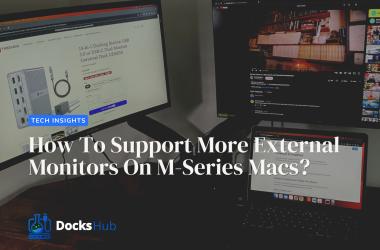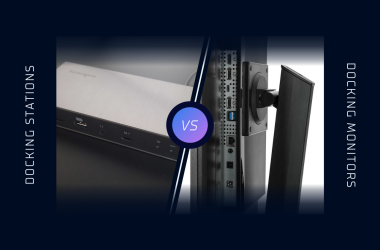Display technologies have come a long way from the humble CRT. You had the LCD, the LED, OLED, and various other acronyms. Some were a hit, and some not so much.
Up till recently, OLED had more or less been accepted as the clear leader in display technology. Undoubtedly, the OLED screen produces a stunning image. Hence, it is the go-to technology for everybody. Right from TV to smartwatch manufacturers and consumers (and everyone in between).
However, now Neo QLED technology is available in mainstream TVs. This has resulted in most experts comparing the two.
So, what is this new technology? How is Neo-QLED different? How does it fare against rival technologies? Which is better? Read on.
Neo-QLED: The Technology
In theory, Neo-QLED is no different from LCD technology. Confused? Let us explain.
LCDs use a backlight to illuminate the display screen. This was great if you wanted your screen to be extra bright. However, this meant that the backlight shone through even when the visuals displayed darker images on the screen. As a result, the images that were intended to be dark did not get an accurate representation. A problem that OLED screens tackled efficiently, but we will get to that in a bit.
QLED attempted to tackle this with the introduction of the Quantum Dot screen. Quantum dots were lit by a backlight which then emitted their light that helped form the on-screen image.

QLED, and now Neo-QLED, work pretty much on the same principle. Neo-QLED uses a miniaturized version of the backlighting mechanism used by QLED. What this does is that it enhances the precision with which the pixels get illuminated. Therefore, you get a sharper image quality with no image trail. This results in significantly better image quality than the QLED technology. So much so that it gives stiff competition to even OLED screens.
OLED: The Technology
We now know that the Neo-QLED uses LCD technology at its core. Meaning, it uses a miniaturized LED backlight to illuminate pixels. The Neo-QLED is the latest in display technology. This makes OLED an older technology. However, is older now redundant? The simple answer, not quite.
OLED or Organic Light Emitting Diode still holds considerable advantages over the newer Neo-QLED technology. To understand this, first, we need to understand the technology at the heart of OLED displays.
Simply put, the OLED display allows each pixel to illuminate independently without the use of a backlight. What this does is that each pixel that does not need to illuminate simply does not come on. As a result, you get a “true black.”
True black is something that every display screen aspires to achieve. This is because a true back is absolutely vital to get an excellent contrast ratio. Generally speaking, the greater the contrast ratio, the better your image will look on the display.
By completely turning off a pixel, the black color displayed on the screen is as close to reality as possible. This is also one of the main reasons why OLED screens are regarded as superior to any other.
Neo-QLED and OLED: The Comparison
Neo-QLED and OLED are competing technologies. Both these technologies give a stunning image quality. Choosing one over the other requires understanding what each of these technologies brings to the table.
Therefore, we shall now examine how each of these technologies delivers on parameters. These parameters pertain to the performance rather than the technology used to implement them.
Contrast Ratio
The contrast of a screen is the most vital parameter. As we mentioned earlier, the higher the contrast ratio is, the better the image quality is. Images appear far more lifelike if the screen you are viewing it on has a higher contrast ratio. The colors would appear rich, brighter, and as close to reality as possible.
On the other hand, images on screens with a low contrast ratio would appear dull. The colors would not be as vibrant; they would appear to be faded and nothing close to the real thing.
The OLED display screen holds an edge here. This edge is because of the fact that the unused pixel remains off. This facilitates an unmatched contrast ratio, that the Neo-QLED tries very hard but cannot match. Further, this is true not just of Neo-QLED but of all backlit screens so far.
Brightness

Although this is not a very important aspect of evaluation, in some use cases, the screen’s brightness plays an important role. For instance, if you plan to install a TV in a room that has plenty of light, either natural or artificial. In such a scenario, you would require a TV screen that has very high brightness.
Alternatively, low levels of brightness should not make too much of a difference in dimly lit rooms. Hence, you should only take this parameter into consideration once you have identified the exact placement location of the screen.
Neo-QLEDs use backlight technology. It is this same technology that gives it superior levels of brightness. Therefore, a living room where you have plenty of sunlight is the ideal space for a Neo-QLED. On the other hand, an OLED is better suited for a den or a basement.
Having awarded the Neo-QLED the edge, remember we mentioned that this is not a key aspect to consider. This is because both Neo-QLED and OLED screens are bright enough to cater to all your needs. There is a difference in the brightness level; however, in most real-world scenarios, this difference is insignificant.
Viewing Angle
The OLEDs lead in this parameter with a clear advantage. How so?

You know that OLED technology centers around the idea of each pixel being turned on or off individually. Hence, it does not matter from what angle you view the screen as the pixel will appear the same.
This is not the case in backlit technologies like LCDs. QLEDs and Neo-QLEDs are ideally viewed from the front rather than from the sides.
The Neo-QLED increases the precision of pixel illumination with the use of the mini-LED backlight. This, in turn, attempts to improve the viewing angles as compared to traditional QLED and LCD screens before it. Despite this, OLEDs maintain an edge over the Neo-QLED. Hence, a Neo-QLED screen may not be the best option for a larger room where viewing angles are greater.
High Dynamic Range (HDR):
HDR is the technology that is responsible for making images look lifelike and as close to reality. It does this by dynamically tweaking colors, brightness, and contrasts to give you a brilliant viewing experience.
Of course, HDR technology also requires the content to be HDR compliant. Gamers using the PlayStation and Xbox consoles appreciate this technology as this gives the realistic simulation they seek. Additionally, there are a few streaming services that offer HDR content. Therefore, if the content you intend to view is not HDR compliant, this parameter should not bother you.
OLED screens universally benefit from the use of this technology. Neo-QLED, being a new and slightly more premium technology, also offers the HDR feature. However, the OLED representation of images is noticeably better, thereby edging out the Neo-QLED screen yet again.
Burn-in:
A burn-in happens in the area of a screen where the image remains static over a prolonged period of time. Realistically, this is a minor issue despite what one may think.
Burn-in happens over a prolonged period of use. The most likely event that this may happen is if you watch only one TV channel endlessly. The result is that the channel logo may cause the pixels to leave an impression because it remains static. This impression may be noticeable even when the TV set is in power-off mode. This means the damage is permanent.
OLEDs suffer from this problem. However, this is a trivial issue as one doesn’t always watch only one TV channel endlessly. Further, the pixels get a break each time you switch the TV off.
Neo-QLEDs do not have this problem because of the backlight used to illuminate the pixel.
Price:
Neo-QLED is a relatively new technology as compared to OLED. Hence, like anything new and anything premium, the price one pays is high. Neo-QLED is not different; you are paying for its novelty. However, this is only the half-truth.
OLEDs have been around for a little while now. Hence, it cannot classify as a new technology anymore. Therefore, the OLED’s prices are at what they are.
When compared to the new Neo-QLED, some variants of the OLED screen may seem to be priced at par, if not lower. No, we are not implying that OLED screens are cheap or cheaper. They are not. Even if they are, they are so only momentarily.
OLED has a price advantage over Neo-QLED screens. Further, this advantage is expected to fizzle out, considering the OLED screen still provides you with a superior image. Once the novelty of the Neo-QLED screens is over, OLEDs will lose this advantage, and Neo-QLEDs will establish an edge on price.
That being said, both technologies are excellent, and it will take nothing less than a connoisseur to differentiate between them.
Miscellaneous:
We have already seen the different technologies and weighed them on various parameters. It becomes pertinent to mention; there are several parameters where neither technology holds a clear advantage.
Firstly, there is the screen size. OLED and Neo-QLED offer you similar if not the same screens sizes. The Neo-QLED has only a slight edge as it offers up to 98-inch screens as opposed to OLED’s 88-inches. However, this advantage is insignificant as most use cases do not call for such big screens.
Secondly, one must consider the range of colors a screen is able to display. This is called the Color Gamut. Both technologies offer a wide array of colors to give you realistic-looking images on the screen. Hence, there is no clear winner here.
Then there is the parameter of screen resolution. OLEDs and Neo-QLEDs offer 4K and 8K screens. Hence, neither technologies hold any advantage.
Next, one must consider the refresh rates offered by the display screen. A screen that offers great contrast, excellent brightness, and fuller colors would be useless without a 120Hz refresh rate. Earlier, display technologies even offered a 60Hz refresh rate. This was fine for the time. However, times have changed, and such high-performance screens demand 120Hz. Yet again, both technologies deliver, leaving no clear winner.
Finally, there is the aspect of power consumption. OLED screens turn on individual pixels when there is a need and turn them off when they need to represent a black color. Hence, to put it simply, their power consumption varies with the content.
On the other hand, Neo-QLED screens with a low backlight setting will consume less power.
However complicated this may sound, most screens today handle their power consumption with tremendous efficiency. Thus, the difference is insignificant, if not negligible altogether.
Is OLED Still Better than QLED?
Neo-QLED is no doubt a superior new technology. It takes the legacy of LCDs to far great heights as could have been imagined when LCDs became mainstream. So Yes, Neo-QLED is here to stay.
OLEDs have been here for a while now. They offer some significant advantages over the Neo-QLED screens. For instance, the contrast ratio offered by OLED remains unmatched even today.
This is despite the fact that Neo-QLEDs offer a far better contrast ratio than their predecessors, the QLEDs. Unfortunately, it still falls well short of the OLED’s capabilities. The Neo-QLEDs offer a significantly brighter screen. But, this advantage has only a limited application.
Neo-QLEDs have caused the narrowing of the gap between OLEDs and QLEDs. However, the fact that this gap still exists is undeniable.
Therefore, all other things being equal (or insignificant), the OLED still seems to be a natural choice.
LinusTechTips did a great side by side comparison for OLED and NeoQLED:





Great analysis! Very helpful and insightful. Since OLED powers each individual pixel, what is the chance of pixels “burning out” light a light bulb?